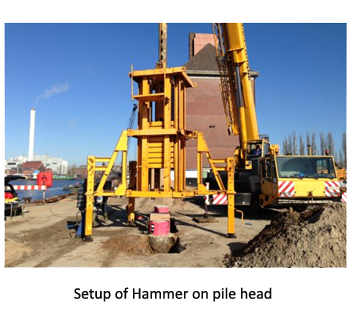
Introduction:
In the realm of civil engineering, where structures are the backbone of modern society, ensuring their resilience and safety is paramount. Dynamic Load Testing emerges as a cornerstone of engineering excellence, offering a nuanced understanding of structural behavior under dynamic forces. In this exploration, we delve into the world of Dynamic Load Testing, navigating through its significance, methodology, and the engineering excellence it brings to the forefront.
Understanding Dynamic Load Testing:
Dynamic Load Testing (DLT) is a sophisticated method employed to evaluate the dynamic response and structural integrity of foundations and piles. Unlike traditional static load testing, which assesses structures under stationary conditions, DLT introduces dynamic forces to simulate real-world scenarios, providing a more comprehensive and realistic evaluation.and dynamic load test
The Significance of Dynamic Load Testing:
Realistic Simulation:
DLT mimics the dynamic forces structures face in the real world, including those induced by seismic activity, machinery vibrations, or dynamic loads from heavy traffic. This simulation offers a more accurate representation of a structure’s performance under actual working conditions.
Early Detection of Issues:
By subjecting a structure to dynamic loading, engineers can identify potential issues such as pile defects, soil-structure interaction problems, or the presence of anomalies that may impact the structure’s stability. Early detection allows for timely remediation, preventing future failures.
Comprehensive Structural Assessment:
DLT provides a holistic assessment of a structure’s response to dynamic forces, offering insights into its natural frequency, damping characteristics, and overall dynamic behavior. This information is crucial for understanding how a structure will perform throughout its operational life.
The Methodology of Dynamic Load Testing:
Instrumentation and Measurement:
DLT involves the use of specialized instruments, including accelerometers and strain gauges, to measure the structural response to dynamic loads. These measurements help engineers analyze factors such as deflections, vibrations, and load-bearing capacities.
Dynamic Loading Application:
Dynamic loads are applied to the structure using various methods, such as impact hammers, vibrators, or the controlled release of falling masses. The response of the structure is closely monitored, allowing engineers to assess its behavior under dynamic conditions.
Data Analysis and Interpretation:
The collected data undergoes rigorous analysis to interpret the structure’s dynamic characteristics. Engineers use this information to validate design assumptions, refine models, and make informed decisions regarding the structure’s safety and performance.
Engineering Excellence Unveiled:
Dynamic Load Testing exemplifies engineering excellence by providing a comprehensive understanding of a structure’s dynamic behavior. This method goes beyond conventional testing, offering insights that contribute to safer and more resilient infrastructure. As engineers navigate the dynamics of load testing, they embrace a proactive approach to structural design and assessment, setting the stage for engineering excellence in the ever-evolving field of civil engineering.and fwd test
Conclusion:
In the intricate dance between structures and dynamic forces, Dynamic Load Testing emerges as a choreographer, guiding engineers through the nuanced movements of structural response. By focusing on engineering excellence and embracing the dynamics of load testing, civil engineers pave the way for safer, more reliable, and enduring infrastructure that stands resilient against the forces of the dynamic world.






